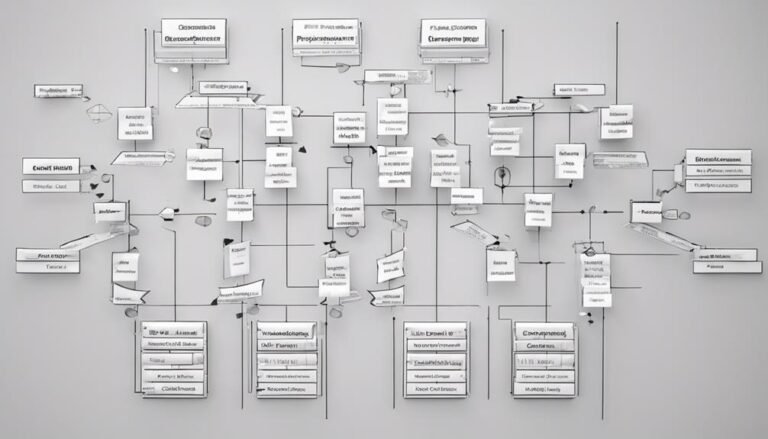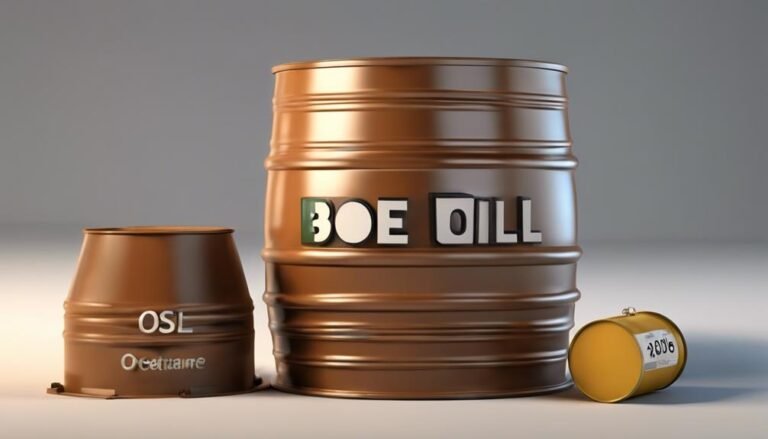Dividend Reinvestment Plans (DRIPs): Compound Your Earnings
Dividend Reinvestment Plans (DRIPs) allow investors to reinvest cash dividends back into additional shares, boosting wealth accumulation. Through compounding returns over time, DRIPs maximize growth potential without incurring extra costs. Automatic reinvestment supports dollar-cost averaging, building a substantial stake in the company. Reinvested dividends are taxed as ordinary dividends, impacting taxable income. Strategic leveraging of DRIPs fosters shareholder loyalty, enhances long-term stability, and aligns shareholder-company interests. Exploring related concepts like investment diversification and asset classes can optimize portfolio growth. Discover how DRIPs can amplify your earnings through compounding to achieve significant wealth accumulation.
Key Takeaways
- DRIPs compound earnings by reinvesting dividends automatically.
- Compounding accelerates wealth accumulation over time.
- Reinvested dividends contribute to long-term financial growth.
- DRIPs offer cost-effective share accumulation for investors.
- Automatic reinvestment enhances shareholder returns and loyalty.
Understanding Dividend Reinvestment Plans (DRIPs)
Dividend Reinvestment Plans (DRIPs), a strategic investment tool offered by numerous publicly traded corporations, allow shareholders to automatically reinvest their cash dividends into additional shares or fractional shares of the underlying stock. DRIPs are integral to investment strategies aimed at wealth accumulation.
By compounding returns over time, investors can maximize the growth potential of their portfolios. These plans facilitate the reinvestment of dividends without incurring additional costs such as commissions, enabling shareholders to acquire more shares at a discount to the market price.
This systematic approach to reinvesting dividends not only aids in dollar-cost averaging but also fosters the accumulation of wealth by harnessing the power of compounding returns over the long term.
Benefits of Automatic Dividend Reinvestment
An analysis of the benefits of automatic dividend reinvestment reveals its potential to greatly enhance long-term investment returns for shareholders.
Reinvesting dividends through automatic dividend reinvestment plans (DRIPs) allows for the compounding of growth over time. By reinvesting dividends into additional shares or fractional shares of the underlying stock automatically, investors can maximize the utilization of every dividend dollar and potentially benefit from increased gains, especially during market downturns.
This systematic approach to reinvesting dividends not only helps in building a more significant stake in the company but also contributes to the overall growth of the investment portfolio.
Through the power of compound growth, automatic dividend reinvestment can play a crucial role in achieving long-term financial goals.
Tax Implications of DRIP Investments
Investors engaging in Dividend Reinvestment Plans (DRIPs) should be mindful of the tax implications associated with these investment vehicles. DRIPs offer tax efficiency and a strategic approach to portfolio growth through automatic reinvestment of dividends. When dividends are reinvested in DRIPs, they are still taxed as ordinary dividends, impacting the overall taxable income. However, reinvested dividends contribute to the compounding of returns, potentially leading to significant long-term growth. It's essential for investors to take into account the tax consequences of reinvesting dividends and how it aligns with their overall investment strategy. The table below summarizes the key tax implications of DRIP investments.
| Tax Implications of DRIP Investments | |||
|---|---|---|---|
| Aspect | Description | Impact | Considerations |
| Tax Treatment of Reinvested Dividends | Ordinary dividends | Taxable income | Potential tax burden |
| Long-Term Growth Potential | Compounded returns | Portfolio growth | Strategic tax planning |
Advantages for Shareholders and Companies
Enhancing shareholder value through strategic reinvestment programs can provide both long-term stability and capital growth opportunities for companies and their stakeholders.
Dividend Reinvestment Plans (DRIPs) offer advantages for both investors and companies. For investors, DRIPs foster investor loyalty by offering a cost-effective way to accumulate shares, often at a discount to market prices. Automatic reinvestment through DRIPs enhances long-term returns and allows for the purchase of fractional shares, maximizing the utilization of dividend income.
Companies benefit from DRIPs through capital generation as shares are purchased for the plan. Shareholders participating in DRIPs tend to hold onto their shares during market downturns, contributing to long-term stability. Additionally, DRIPs help in creating a loyal shareholder base that recognizes the significance of dividends in portfolio growth.
Leveraging DRIPs for Long-Term Growth
Moreover, at its core, utilizing Dividend Reinvestment Plans (DRIPs) strategically can greatly contribute to long-term portfolio growth for shareholders and companies alike.
By reinvesting dividends into additional shares, investors can accelerate wealth accumulation through compounding returns. This method allows shareholders to benefit from the snowball effect, where reinvested dividends generate more dividends, leading to exponential growth over time.
The compounding effect of DRIPs maximizes the potential for long-term wealth creation by continuously reinvesting earnings without incurring additional transaction costs.
Additionally, companies offering DRIPs can attract loyal shareholders who understand the significance of dividends in achieving sustained portfolio growth. Leveraging DRIPs for long-term growth aligns the interests of shareholders and companies in fostering financial stability and prosperity.
Exploring Related Investment Concepts
Exploring various investment concepts beyond traditional dividend reinvestment plans (DRIPs) provides investors with a diversified toolkit for optimizing portfolio growth. By delving into related concepts, investors can enhance their understanding of investment diversification, risk management, dividend growth, and portfolio optimization.
- Investment diversification: Exploring different asset classes and industries can help spread risk and reduce exposure to any single investment.
- Risk management: Understanding risk tolerance and utilizing strategies like asset allocation can help mitigate potential losses.
- Dividend growth: Focusing on companies with a history of increasing dividends can lead to a growing income stream over time.
Compliance With Securities Regulations
Securities regulations play an essential role in maintaining transparency and compliance within the financial markets. Adherence to securities regulations is vital for companies offering Dividend Reinvestment Plans (DRIPs) to guarantee they meet regulatory requirements.
These regulatory requirements include following SEC Form S-3D, which mandates transparent reporting of security purchases for shareholders. By filing Form S-3D through the SEC's EDGAR system, companies demonstrate their dedication to regulatory compliance, allowing investors to track actions related to shareholder investments.
Compliance with securities regulations not only fosters trust and credibility but also safeguards investors' interests by ensuring that DRIP offerings are in line with regulatory standards, promoting a fair and transparent investment environment.
Maximizing Returns With DRIP Strategies
The successful implementation of strategic DRIP strategies can greatly enhance returns for investors seeking long-term growth opportunities. Maximizing compounding and utilizing strategic reinvestment strategies are vital for optimizing the benefits of DRIPs.
To achieve this, investors should consider:
- Reinvesting dividends promptly to take advantage of compounding effects.
- Strategically selecting the timing of additional share purchases to maximize returns.
- Diversifying the portfolio by reinvesting dividends across multiple companies or sectors.
Conclusion
To sum up, Dividend Reinvestment Plans (DRIPs) offer investors a strategic method to compound their earnings and enhance long-term wealth accumulation.
With approximately 650 companies and 500 closed-end funds currently offering DRIPs, investors have access to a diverse array of opportunities for maximizing returns through automatic reinvestment of dividends.
By leveraging DRIP strategies effectively, investors can benefit from the compounding effect of reinvested dividends, ultimately leading to sustainable growth in their investment portfolios.







